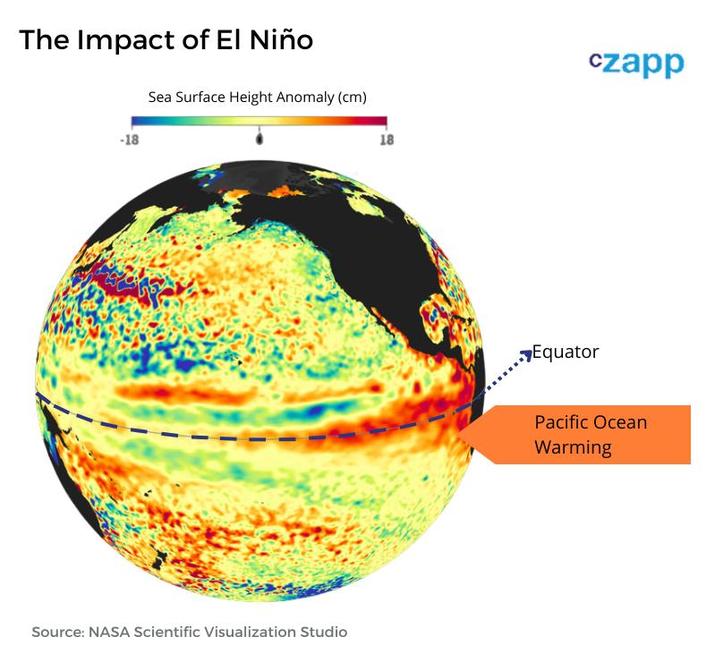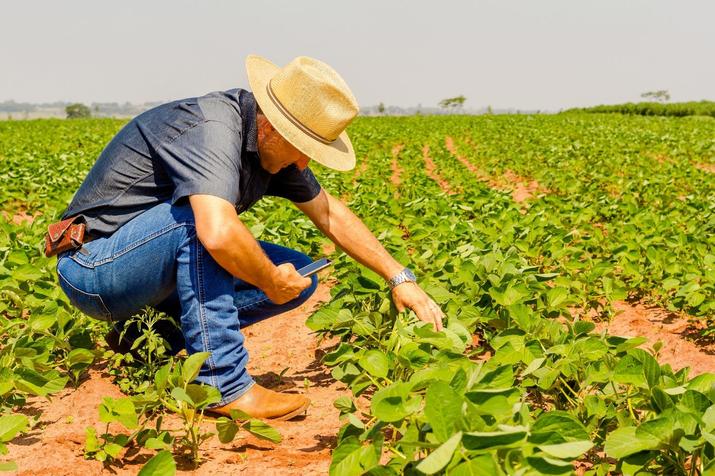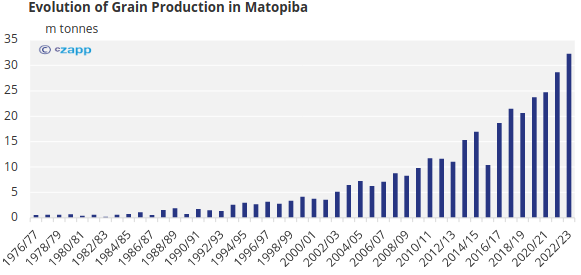Opinion Focus
- El Niño should be beneficial for soybean planting in the South.
- In the Midwest, the climate should be drier, which could delay the start of grain planting.
- The impact of El Niño, however, can only be measured in the coming months.
Rural producer Elmar Konrad, from Rio Grande do Sul, is optimistic about the next soybean harvest, for which planting will begin in October. After two years of drought, the forecast could finally favour agriculture in the south of the country, a region that has been gaining importance for grain production, with the arrival of El Niño.

The expectation is for more regular rains from September onwards, favouring crops. Konrad, who grows grains in an area of 1,200 hectares, intends to harvest almost 4 thousand tonnes of soybeans in the 2023/2024 harvest, more than double the last cycle. “After two complicated years, with drought and crop failure, the arrival of El Niño is a relief here in my region,” he says.

Soybean farmer in Brazil. iStock photo.
With that, the probability of another record harvest of grains has been growing. Conab (National Supply Company) expects 317.6m tonnes of grains to be produced this year, 16.5% more than the previous cycle. Market estimates indicate that in 2024 the production of soybean, the flagship of Brazilian agribusiness and exports, should grow by 5.3%.
This year, the South region should produce around 38 million tonnes of grain, 65% more than in the previous cycle, but still below the record registered in 2020. The expectation for the next harvest is also positive.

Source: CONAB
In Mato Grosso do Sul, which accounts for 9% of grain production in Brazil, farmers are also excited. “It should start to rain from the end of this month and in October, during the planting period, which is very positive”, says rural producer Valdir Takahashi Gulo, who cultivates 700 hectares of soybeans and corn in the Dourados region, in Mato Grosso do Sul. He should harvest 15 thousand tonnes of grains in the next harvest, 25% more than in the previous cycle. “This result is largely due to the climate”, he states.

Valdir Takahashi Gulo, rural producer from Mato Grosso do Sul. Publicity photo.
In most of the Midwest, however, the tone has been a bit more cautious. Meteorologists have been warning of the possibility of a drier climate, with some delay in the onset of rain, especially in the north of Mato Grosso and Goiás. In any case, the Central-West is not usually very affected by El Niño, although this year there is an expectation of less humidity at the beginning of summer, in December.
“It is still premature to predict patterns, as we will have more clarity about the effects of El Niño in the coming months”, says agrometeorologist Gilberto Cunha, from Embrapa (Brazilian Agricultural Research Corporation). “But, as there is a tendency towards a drier climate, rural producers must invest more in higher quality inputs and technical assistance, which can increase production costs”, he states. In recent years, fertilizers prices have already been increasing due to the war in Ukraine and sanctions against Russia, which is the top supplier of fertilizers to Brazil.

Source: CONAB
El Niño, a climate phenomenon that occurs at intervals of up to seven years, causing the waters of the Pacific Ocean to warm, normally has an impact on the world’s climate. In Brazil, one of its main effects tends to be a drier climate in the North and Northeast and rain in the South region.

In the last ten years, production growth was 92%.In the Center-South, El Niño typically causes warmer weather, which can lead to increased precipitation, as discussed in previous articles . In the last El Niño period, in the 2015/2016 harvest, the greater volume of rain had a beneficial effect on productivity and the mills exceeded 618 million tonnes of sugarcane, a record. In other regions of the world , El Niño is expected to have different impacts.
Matopiba
El Niño should bring more heat and dry weather to the so-called Matopiba region, which comprises Maranhão, Tocantins, Piauí and part of Bahia. The location, considered the new Brazilian agricultural frontier, accounts for around 10% of grain production in the country.

Source: CONAB
By 2033, production should achieve a 37% increase, according to the Ministry of Agriculture. The 2023/2024 harvest, however, should require greater attention from rural producers. “It is precisely the region of the country that will suffer the greatest impact from El Niño, but nothing that cannot be circumvented with technical assistance and seeds with greater germination power”, says Cunha, from Embrapa.








